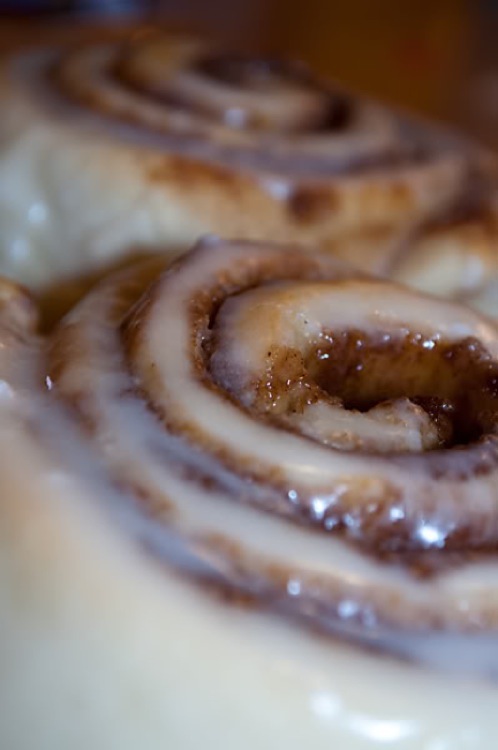
Ooey, gooey Cinnamon Rolls
My parents grew up in a small town in rural Indiana in the 30’s and 40’s. They spent their lives dealing with the sweltering summers and frigid winters. When my father was stationed in California while in the Navy, he and my mother decided that they never wanted to go through another mid-western winter. So they packed up the family and moved to the San Francisco Bay Area. I had a terrific childhood but the one thing we missed was having extended family around us. Our two sets of grandparents would each come out once a year, alternating between summer and Christmas vacations. I waited eagerly for their visits and wish we had lived closer so we could have spent more time with them.
When my father’s parents would visit, my grandmother Mimi would let me help her cook, teaching me the way her mother had taught her. Mimi was a wonderful cook and baked everything from scratch. She taught me how to measure ingredients, beat everything by hand, knead dough, and how to time it so that all the parts of a dinner were ready at the same time. I helped her roll out noodles, debone cooked chicken, and make French fries. Some of my fondest memories of childhood involve standing by Mimi’s side, (on a stool when I was really little) helping her cook and bake. I can still feel her warm hands guiding mine as I learned to shape dough or cut out cookies. They were rough and calloused but always gentle.
One of our family’s favorite treats were her cinnamon rolls. We begged for them. Sometimes she used the same dough and made cinnamon twists which were my favorites because I got to help her make them. I would braid the dough, dip them in melted butter and roll them in cinnamon sugar. When we were done I had butter up to my elbows, was covered with sugar and grinning from ear to ear!
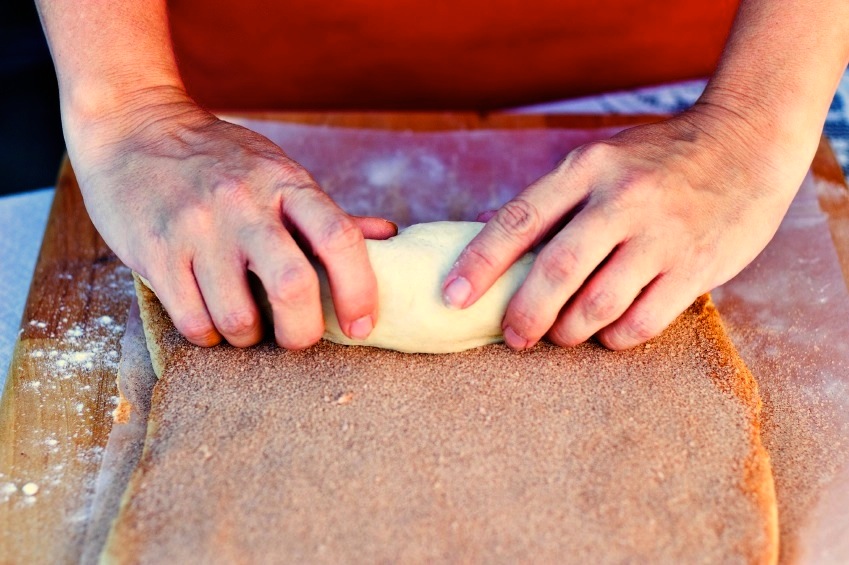
Rising Cinnamon Rolls
Mimi died when I was just 10 and we didn’t have many of her recipes written down. This recipe is as close as I have found to the way hers tasted. I learned today’s recipe for cinnamon rolls from two wonderful bakers, Tim and Crystal Decker. They own Bennett Valley Bakery in Santa Rosa, California. It is a wholesale bakery, but you can buy their products at the Santa Rosa farmer’s market and at some local grocery stores. I was lucky to attend one of their classes at Ramekins, an incredible cooking school in the town of Sonoma. The next time you visit, check Ramekin’s class schedule and sign up for a class if you can.
The hardest part of baking pastries is we want them for breakfast and that means we have to get up at 4 am right? Wrong! You can make the dough the night before, let it rise once, form into rolls or other shapes, and place in the refrigerator for what is called a cold rise. This gives you extra time to sleep in the morning before baking them off! This type of dough does rise much faster than bread dough and you can probably get them made and risen much more quickly than you think.I always thought that cinnamon was just cinnamon, until I learned about Penzey’s Spices. That was when I discovered the world of cinnamon. While all cinnamon is harvested from the bark of trees, where they are grown and how they are processed makes a huge difference in the final spice.
There is “true” cinnamon, harvested from the Cinnamomum evergreen tree native to Sri Lanka (formerly known as Ceylon), and Cassia which is cinnamon that originates in China and other areas of Southeast Asia, primarily Vietnam and Indonesia. Unbeknownst to us, what we call cinnamon in the United States is actually usually a variety of Cassia. It has a stronger, spicier flavor and aroma that we are accustomed to. Real cinnamon is much lighter in both color and flavor, with citrus and floral overtones. It is more popular in Latin America where it has become a beloved ingredient in recipes such as Mexican Hot Chocolate.
But you can tell them apart. Cassia is dark reddish brown, the bark forms a double quill, and is thick and hard. Ceylon cinnamon is a light tan, rolls up like a cigar into a single quill, and is thin and brittle. What we know as cinnamon sticks are really Cassia sticks, but that just doesn’t have the same ring, LOL.
I now buy Vietnamese Cassia cinnamon because I like its bright, spicy flavor in my baked goods. Because of its natural strength, I use less in my recipes. If you find huge containers of cinnamon for a low price, they may not be as great a deal as you think. These are various grades of cinnamon and low prices usually mean that it is poor quality and will be bitter and astringent tasting. If you think about how little you use in most baking, I think it is a good choice to buy a higher grade and use less of it. The cost difference in the long run is miniscule and the taste is infinitely better.
I love cinnamon in baked goods and walking into the house with its aroma wafting through the air is incredibly comforting. These days when I go into a bakery and there is a cinnamon roll or twist for sale, I always buy that. And every time I eat one I think of Mimi and smile…
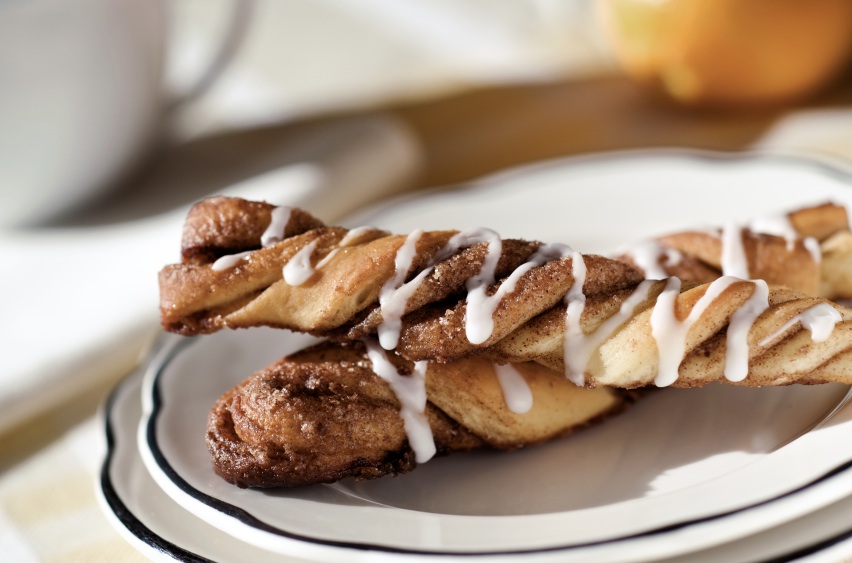
Variation: Cinnamon Twists made with the same dough
Jane’s Tips and Hints:
If you would like to turn these into sticky buns, mix 1-1/4 cup brown sugar with 1 stick of softened butter until smooth. Spread on the bottom of a buttered baking pan. Sprinkle with about 1 cup chopped pecans. Top with rolled and sliced dough from this recipe and bake as directed below. When the rolls are done, remove from the oven, set aside for 5 minutes and then, holding a platter over the top of the pan, carefully invert them onto the platter. Don’t wait too long or the sticky topping will set and you won’t be able to get them out of the pan!
Kitchen Skill: How to Knead Dough
This recipe is designed to be made with a heavy-duty stand mixer. If you don’t have one you can do the kneading by hand. Place dough on a well-floured surface and sprinkle the top with more flour. Using a rocking motion, with the heels of your hands in the middle of the dough, extend your arms and push the dough away from you. Fold it over onto itself (toward you), spin it a quarter turn and repeat. Keep kneading until the dough is smooth and stretchy and it doesn’t stick to your hands adding more flour as needed. Form into a smooth ball and continue as directed below.


- Rolls
- 4 oz butter (1 stick)
- 3/4 cup milk
- 1/2 cup sugar
- 2 tbsp dry yeast
- 1 cup water
- 3 eggs
- 5 to 6 cups bread flour or all-purpose flour
- 1/2 tsp salt
- Filling
- 1 cup sugar
- 1 cup brown sugar
- 2 tbsp cinnamon (preferably Vietnamese or Korintje)
- 4 oz butter (1 stick)
- Icing
- 5 oz butter (1-1/4 sticks)
- 16 oz (1 lb) mascarpone cheese
- 4 cups powdered sugar, or as needed
- 1 to 2 tsp fresh lemon juice
- Heat butter, milk, and sugar until butter is melted. Cool to lukewarm (should feel slightly warmer than normal skin temperature.)
- Meanwhile, in a separate bowl, combine flour and salt. Combine cooled butter, yeast, water, and eggs in the bowl of a heavy-duty mixer. Slowly add the flour mixture to the liquids. Change from paddle to dough hook. Mix for 4 to 6 minutes or until the dough pulls away from the sides of the bowl and crawls up the hook. Place dough into a lightly buttered bowl, turning to butter all sides, cover with a towel, and place in a warm, draft free spot for the first rise.
- Wait until the dough has doubled in size, about an hour. NOTE: This can vary widely depending on the strength/age of yeast and the temperature of the room. Judge this more on volume than timing.
- While dough is rising, make filling. Combine sugar, brown sugar, and cinnamon, and then cut the butter in until crumbly; set aside. Butter a baking sheet; set aside.
- Transfer risen dough to a lightly floured surface. With a floured rolling pin, roll dough into a rectangle about 12×9-inches for 3-inch rolls. Brush off any excess flour. Top with filling mixture, leaving a clean edge around the sides. Starting at the long edge, roll tightly into a log. Using a very sharp knife, trim off the ends and cut log into 12 equal pieces for large rolls, or 24 pieces for smaller portions. Place rolls cut-side up on prepared baking sheet with edges touching. Press the top of each roll down to flatten slightly and spread the tops to partially expose the filling. Cover and set rolls aside to rise until doubled, about 45 minutes.
- Preheat the oven to 350°F.
- When dough has risen, bake at 350°F for 15 to 20 minutes or until golden brown, spinning the pan halfway through. Transfer baking sheet to a cooling rack. Cool slightly.
- Place the icing ingredients in a bowl. Cream until smooth. While the rolls are still warm, drizzle glaze over the top. Pull rolls apart and serve. If you have any icing left over, pass it at the table. Your guests may want to slather extra on their rolls!
- Yield: 12 to 24 pieces, depending on size of rolls.
- VARIATION: To make Cinnamon Twists, after the first rise, divide plain dough into 12 portions. Divide each portion into thirds and roll each piece into a “rope” about the same length and diameter. Lay the 3 ropes side by side and pinch the tops together. Braid them together (place left piece over middle piece, so that the left piece is now in the middle. Then place the right piece over the middle piece) and pinch end.
- Coat each twist with melted butter and roll in cinnamon sugar. Place on buttered baking sheet, cover loosely with a piece of plastic wrap, and let rise. Bake as directed above.
Thank You!
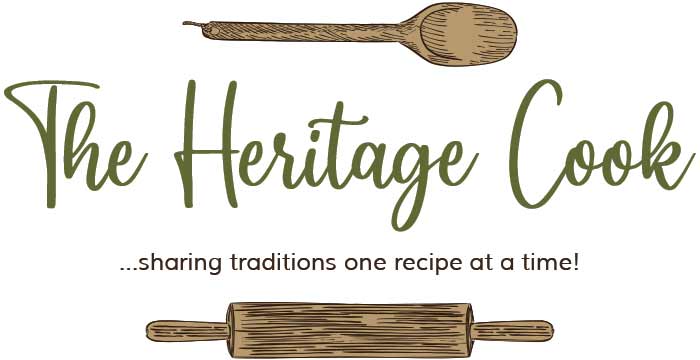
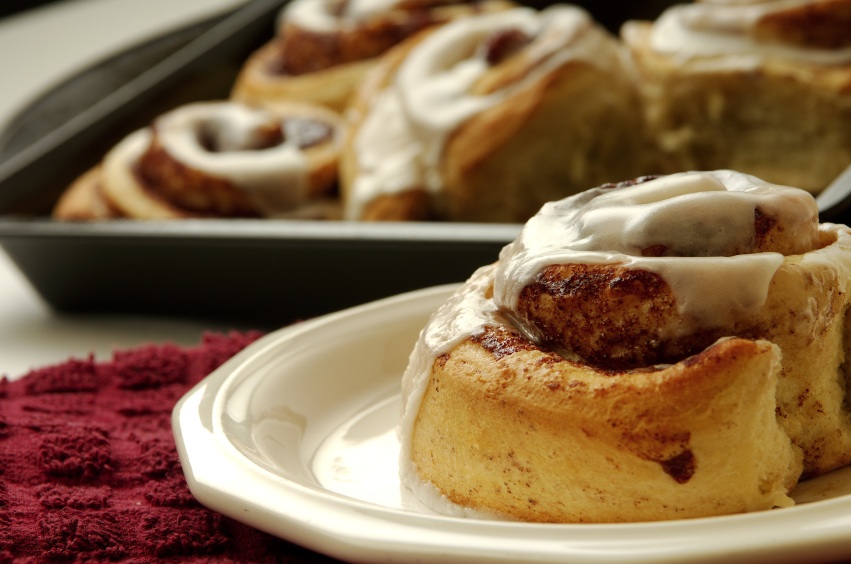

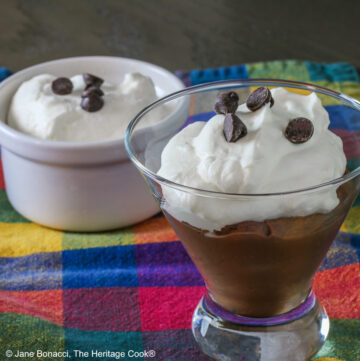
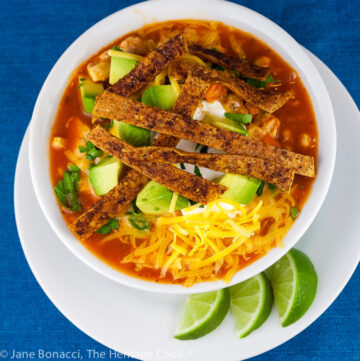
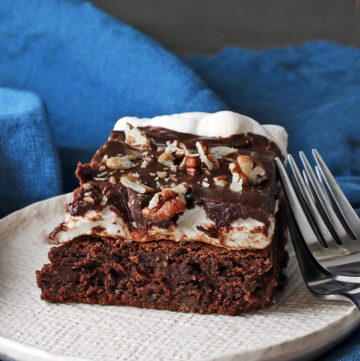
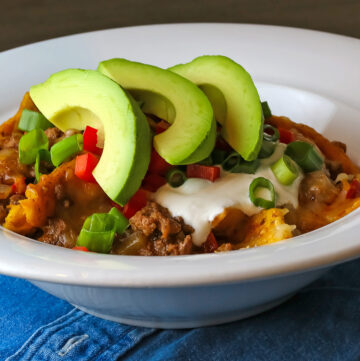
Karen Palmer
You know that Cinnamon rolls are one of my favourites to make. I love all the helpful hints (as always) to refine my technique and make longtime favourites even better! Can hardly wait to bake these.
Jane Bonacci, The Heritage Cook
I hope you love them as much as I do Karen. These are near and dear to my heart!
Glamorous Glutton
This looks like a great recipe and with all the wonderful family narrative a very special one too. GG
Feast on the Cheap
My mouth is watering…no really.